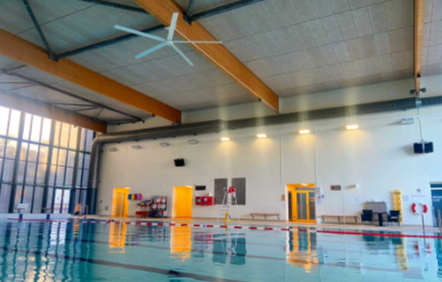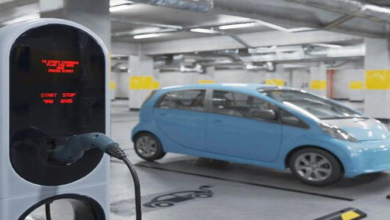HVLS Fans: The Ultimate Solution for Energy-Efficient Climate Control

In industrial settings, maintaining optimal climate control is crucial for both productivity and employee comfort. High Volume Low Speed (HVLS) fans offer an innovative, energy-efficient solution for managing the climate in large industrial spaces. This guest post explores how HVLS fans can transform climate control in industrial settings, leading to improved efficiency, comfort, and cost savings.
Understanding HVLS Fans
HVLS fans are large-diameter fans designed to move significant amounts of air at low speeds. Typically, these fans range from 7 to 24 feet in diameter and are capable of circulating air over large areas, making them ideal for expansive industrial environments such as warehouses, manufacturing plants, and distribution centers.
Key Benefits of HVLS Fans
Energy Efficiency
One of the most compelling benefits of HVLS fans is their energy efficiency. By promoting better air circulation, these fans can significantly reduce the load on HVAC systems. During warmer months, HVLS fans create a cooling effect through the wind chill phenomenon, allowing facilities to raise thermostat settings without compromising comfort. In cooler months, HVLS fans help to distribute warm air evenly throughout the space, reducing the need for excessive heating. This dual functionality results in lower energy consumption and substantial cost savings.
Improved Air Quality
In industrial settings, air quality is a critical concern. HVLS fans enhance air circulation, which helps to disperse pollutants, dust, and fumes that can accumulate in stagnant air. By maintaining a continuous flow of fresh air, HVLS fans contribute to a healthier working environment, reducing the risk of respiratory issues and improving overall employee well-being.
Enhanced Comfort and Productivity
Employee comfort directly impacts productivity. Inconsistent temperatures and poor air circulation can lead to discomfort and decreased efficiency. HVLS fans ensure a more uniform temperature distribution and consistent airflow, creating a more comfortable environment for employees. This not only enhances worker satisfaction but also boosts productivity and reduces absenteeism.
Read more Tips for identifying the quality and authenticity of Kanchipuram silk sarees
Reduced Maintenance Costs
Compared to traditional high-speed fans, HVLS fans have lower maintenance requirements. Their robust design and low-speed operation mean less wear and tear, resulting in fewer breakdowns and longer lifespans. This reliability translates to lower maintenance costs and less downtime for repairs, further contributing to cost savings.
Practical Applications of HVLS Fans
Warehouses and Distribution Centers
In large warehouses and distribution centers, temperature stratification can be a significant issue. Warehouse Fans help to eliminate hot and cold spots by promoting even air distribution. This ensures that products are stored in optimal conditions and employees work in a comfortable environment.
Manufacturing Plants
Manufacturing plants often generate heat from machinery and processes. HVLS fans help to dissipate this heat, maintaining a stable temperature that prevents equipment overheating and ensures worker comfort. The improved airflow also helps to remove fumes and airborne particles generated during manufacturing processes.
Agricultural Facilities
In agricultural settings, maintaining proper ventilation is crucial for the health of livestock and the storage of produce. HVLS fans provide gentle, consistent airflow that helps to regulate temperature and humidity levels, creating an ideal environment for both animals and crops.
Conclusion
HVLS fans are the ultimate solution for energy-efficient climate control in industrial settings. Their ability to enhance air circulation, improve air quality, and provide significant energy savings makes them an invaluable asset for any large facility. By investing in HVLS fans, industrial operations can achieve a more comfortable, productive, and cost-effective environment, ultimately leading to improved operational efficiency and employee satisfaction.





